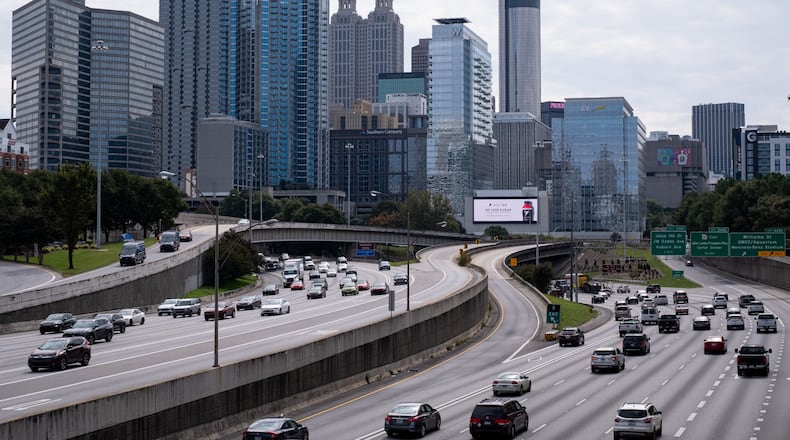One barrier to innovation and expansion of Georgia’s traffic infrastructure is the sheer effort that maintaining existing bridges and roads takes. The state’s growing population presses on and stresses the traffic system, both needing more of it and creating more stress upon it. It’s a cannibalizing cycle made worse by limited mass transit options and the spatial need for vehicles. But what if some parts of these overtaxed structures could repair themselves? That could be just around the bend.
Enter Dr. Sarah Hintermayer, whose expertise in bioprocess engineering for specialty chemicals titan Evonik Industries, led her to winning an innovation competition within the German company. Evonik gave Dr. Hintermayer one year and over $200,000 to develop her prize-winning idea: a self-healing cement. The project was called WallCraft - yes, even employing the World of Warcraft gaming theme.
Dr. Hintermayer found that mixing concrete with live, but dormant bacteria could repair itself, if something activated the microorganisms. Let her explain.
“So spores - that’s kind of a sleeping form of bacteria - and also we are adding some nutrition, so that once the spores wake up, they have something to eat. Basically, they do wake up if water enters the concrete and gets it really wet,” Dr. Hintermayer told the AJC and 95.5 WSB.
Water enters concrete when the very cracks that need repair begin to form. “You can repeat it. It’s like when you cut your skin, it can heal, and it can heal again and that happens with the concrete itself. And the process in the concrete itself is very similar to a coral reef - a very tiny coral reef in the crack of a concrete structure,” Dr. Hintermayer explained. “In the concrete, you have an excess of calcium. And then the carbon dioxide [produced by the bacteria] and the calcium have a reaction, forming limestone.”
Dr. Hintermayer continued: “The carbon dioxide will fill up any crack and close up the surfaces of concrete structures. Once the crack is closed, there won’t be any water in it any longer and the bacteria goes back to sleep.”
This process can repeat itself as long the nutrients exist and builders likely will be able to add more nutrients or bacteria themselves where needed. “With the bacteria, we increase the amount of carbon dioxide exactly where we need it, so that the crack fills up way faster. So that’s the trick.”
When the original bacteria in the concrete die, they will have produced plenty of replacements. “They want to reproduce, that’s their purpose,” Dr. Hintermayer conveyed, giving this writer flashbacks to his 9th grade Biology class. “The way they divide is - once the conditions get bad, they go back into the spores form. And they can be activated, once the conditions are good again.”
But can this biological process produce limestone fast enough to repair a fissure on a bridge, for example? “If there’s a crack that forms slowly, maybe [the self-repair] happens later or it doesn’t happen at all,” Dr. Hintermayer said. The bigger the crack, the more exposure to water, so the faster that these bacteria activate and begin the eventual limestone production. The “healing” does not instantaneously completely heal a crack, but the repair begins automatically.
“Because you have the bacteria in the repair mortar, basically it grows into the interface. So you have a much better connection between the repaired part and the old part.” Dr. Hintermayer said that repairing traditional cement is difficult, because getting new material to mix with the original surface does not happen easily. But using a bacteria-infused repair mortar simplifies the process, because of the healing power of the microorganisms.
One caveat to this mixture’s efficacy is that the cement has to have some sort of water exposure to activate. So, this solution would not work for interior-facing concrete. However, a lot of interior concrete cracks because of the expansion of corroding steel. Water causes that corrosion. So, in theory, self-healing concrete could work in that environment if enough water entered.
Structures that could benefit the most from self-healing cement are bridges, parking lots, and basements - all of which get exposed to moisture, Dr. Hintermayer said.
Evonik is already working with a constructor who is about to build a parking lot with this revolutionary material. A competing company is procuring a concrete that heals itself with a chemical reaction, rather than with bacteria. But the problem there, Dr. Hintermayer said, is that once the reaction occurs once, it cannot occur again. Another competitor has created a repair mortar with polymers that cure very quickly. But, again, that reaction can only occur once. There is at least one other competitor using bacteria similarly to Dr. Hintermayer.
Dr. Hintermayer’s hope is that their product will be ready for the market in the second half of 2021. She said that the initial cost of the concrete is more expensive than traditional material, but its healing abilities save the money over time. She also said that traditional concrete is increasing in cost over time, because, believe it or not, there is a sand shortage. “We’re running out of sand. I’m not kidding you here,” Dr. Hintermayer said. Add that to your “Things I Heard in 2020” list.
This self-healing concrete is also better for the environment, because concrete production produces lots of carbon dioxide. This bacteria-infused material heals itself, meaning less concrete production is needed in the long run.
This infused cement, however, will not necessarily remedy cracks and potholes that form in roads. Asphalt, not cement, is the main material on thoroughfares and bacteria would not survive that high-temperature mixing process. But bridges and sidewalks could see a near-immediate benefit from this regenerative cement.
The American Society of Civil Engineers gave Georgia’s bridges a “C+” grade in its 2019 “Infrastructure Report Card.” By their definition, that means that the state’s bridges are generally in fair or good condition, but require attention and have an increasing vulnerability to risk. Any repair is costly. But products like Dr. Hintermayer’s and Evonik’s WallCraft could cause some of those necessary fixes to be done once and the right way. That is a major step forward.
Doug Turnbull, the PM drive Skycopter anchor for Triple Team Traffic on 95.5 WSB, is the Gridlock Guy. He also hosts a traffic podcast with Smilin’ Mark McKay on wsbradio.com. Contact him at Doug.Turnbull@cmg.com .
About the Author
The Latest
Featured


